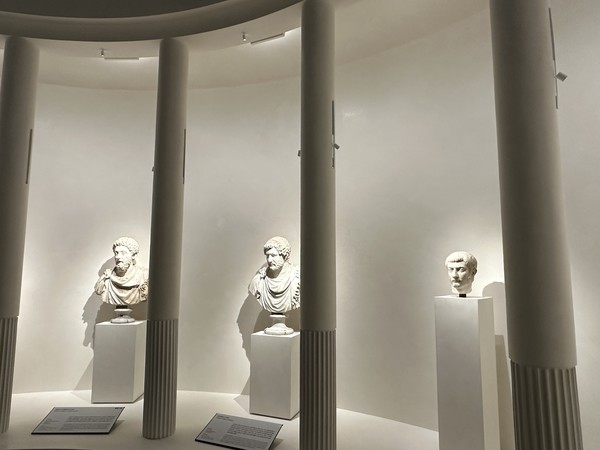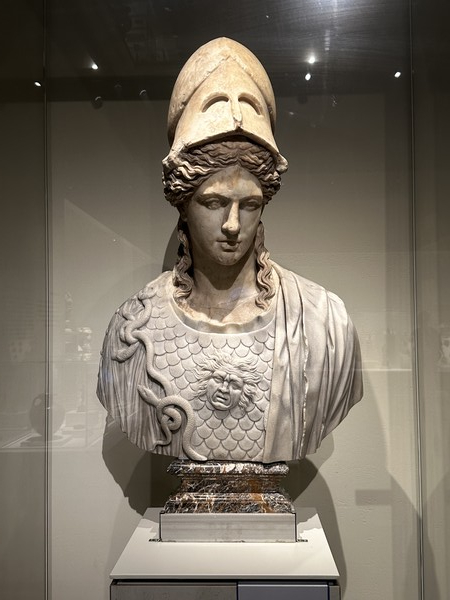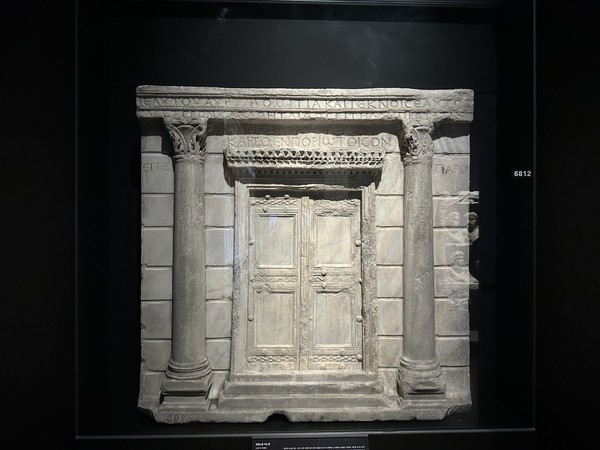The heritage left by ancient Greece and Rome for humanity is vast and profound. It includes concepts like democracy, Roman law, various philosophies, and more, all of which continue to influence the world today. In addition to tangible and intangible heritages, inspiration drawn from Greek and Roman mythology can be easily found in many games, movies, dramas, and other forms of media. Despite having dynamic histories and captivating cultures individually, many people associate these two nations. Why do people usually remember the two nations together? To answer this question, the National Museum of Korean has established a new exhibition room in June of this year and organized the ‘Separate but Inseparable: Mythology and Culture of Ancient Greece and Rome’. By showcasing artifacts from Kunsthistorisches Museum’s collection, this exhibition, which has been on a long-term loan for about four years, offers visitors a different perspective on Greece and Rome. CAH invites you to a unique exhibition titled ‘Separate but Inseparable: Mythology and Culture of Ancient Greece and Rome,’ which allows you to understand the cultures of ancient Greece and Rome in a new light.

World of Mythology
The myths of ancient Greece and Rome are well-known to many people due to their captivating stories. In Part 1, ‘The World of Mythology,’ there are many artworks that reflect the mythologys, which have been passed down through the ages, using various artifacts such as Greek pottery depicting the gods and Roman-era marble sculptures and bronze statues. These artifacts illustrate how mythology has served as an interpretation of the world for ancient people who couldn't explain the fundamental principles of nature scientifically. At the core of these myths lie various aspects of ancient life and values, and it's worth noting how these artistic representations of myths played a role in consolidating people's cultural identities. Furthermore, when observing various depictions of gods on display, visitors can notice that they often have the appearance like humans. We may also recall from our childhood memories of reading Greek and Roman mythology comics that depict gods as human’s appearance. This suggests that during that time, Greek religion held the belief that gods are in the likeness of humans. For instance, when looking at the representation of the goddess of war, ‘Athena/Minerva,’ with a helmet atop her head and a shield in her breast, visitors can confirm that she was venerated as the goddess of war, Athena. Examining sculptures of gods portrayed with the most beautiful and idealized forms, people of that era can sense the flawless perfection that people of that era associated with the existence of gods. The sculpture ‘Beauty is Virtue’ portrays the moment when the goddess of love, Venus, emerges from a bath. Aphrodite (Venus) is depicted in the nude, and here as well, visitors can observe that the ideal of beauty was an important theme when creating sculptures within the ancient Greek cultural sphere.

The World of Human
In Part 2 of the exhibition, as the name suggests, the focus is on the development in portraiture art in Greece and Rome, highlighting the cooperative relationship between these two cultures. Historically, despite Greece being under Roman occupation around the 2nd century B.C., Greek mythology, philosophy, literature, and more heavily influenced Rome, demonstrating a deep connection. One of the highlights of this exhibition, the ‘Portrait of Gaius Julius Caesar’ is also shown in this section. His imposing presence in armor, gazing directly forward, conveys a sense of determined resolve. The interpretation suggests that through the three-dimensional statue, Julius Caesar aimed to instill loyalty and reverence among the people of his era. Romans who admired Greek sculptural art often replicated these artworks on a large scale and displayed them in public spaces or private residences. As a result, Greek cultural elements could spread throughout the Roman Empire. Here is also the sculpture of famous person to the public. ‘Aristotle’, which was based on an original sculpture by Lysippos, expressed its detailed rendering of his tousled hair and a lively, energetic demeanor that highlighted his wisdom. In this manner, early Greek sculptures primarily depicted wise philosophers and esteemed politicians, but as time progressed, they shifted towards emphasizing individual characteristics.

The Empire of Shadows
Ancient Greeks and Romans believed that death was not the end of life but a transition to another existence. This belief is evident in their contemporary literature, where death is often described using words like transformation, journey, slumber, or parting. Additionally, many kinds of tomb sculptures depict motifs of individuals passing through doors to the afterlife or sharing farewells with their families. Furthermore, in the memorial sculpture ‘Gate to Hades’, visitors can understand that ancient people perceived death as a sojourn in the realm of shadows. This monument, shaped like a door, symbolizes the entrance to the underworld, Hades. Inscriptions on the door carve the name of the tomb owner and greetings to those passing by. It conveyed a sense of the efforts made by those who wished not to forget the deceased. In contrast to the previous sections, the third part of this exhibition was presented against a dark backdrop, enhancing the somber atmosphere, and immersing the visitors further. Recognizing death as an inevitable fate and a boundary that separates mortals from the divine, ancient Greeks and Romans attached great significance to funeral rites. Believing that the deceased would live eternally if remembered, they often placed tombs prominently along roadsides. When observing the ‘Cremation Urn of Lulia Vera’, visitors cannot help but notice the rose-shaped ornamentation on the lid. According to the inscriptions in Latin, this urn was prepared by her father to commemorate his daughter who passed away at a young age. The beautiful roses on the top of the urn seem to resemble her, as if the blossoms had fallen prematurely. In this exhibit as well, it becomes evident that such artifacts serve to evoke memories of the deceased, alongside their portraits.

Ultimately, the outcome of "mythology" became a resource in the era of oral culture, allowing the constituents of both nations to share their knowledge, information, and wisdom. It served as a means for them to understand and explain the world. Therefore, Greece and Rome likely naturally embraced and imitated each other, contributing to the advancement of humanity. This exhibition, through themes such as mythology, portraiture art, and funerary practices, showcases the scenes of art and culture that ancient Greece and Rome shared and created together, highlighting the historical significance of these interactions. I recommend visiting the National Museum of Korea to appreciate the mysterious myths of the Greek and Roman eras.
Date: 2023.06.15 – 2027. 05.30
Place: National Museum of Korea
Ticket Price: Free
Running Time: 10:00 – 18:00 (Closed at 21:00 in Every Mon. & Wed.)

